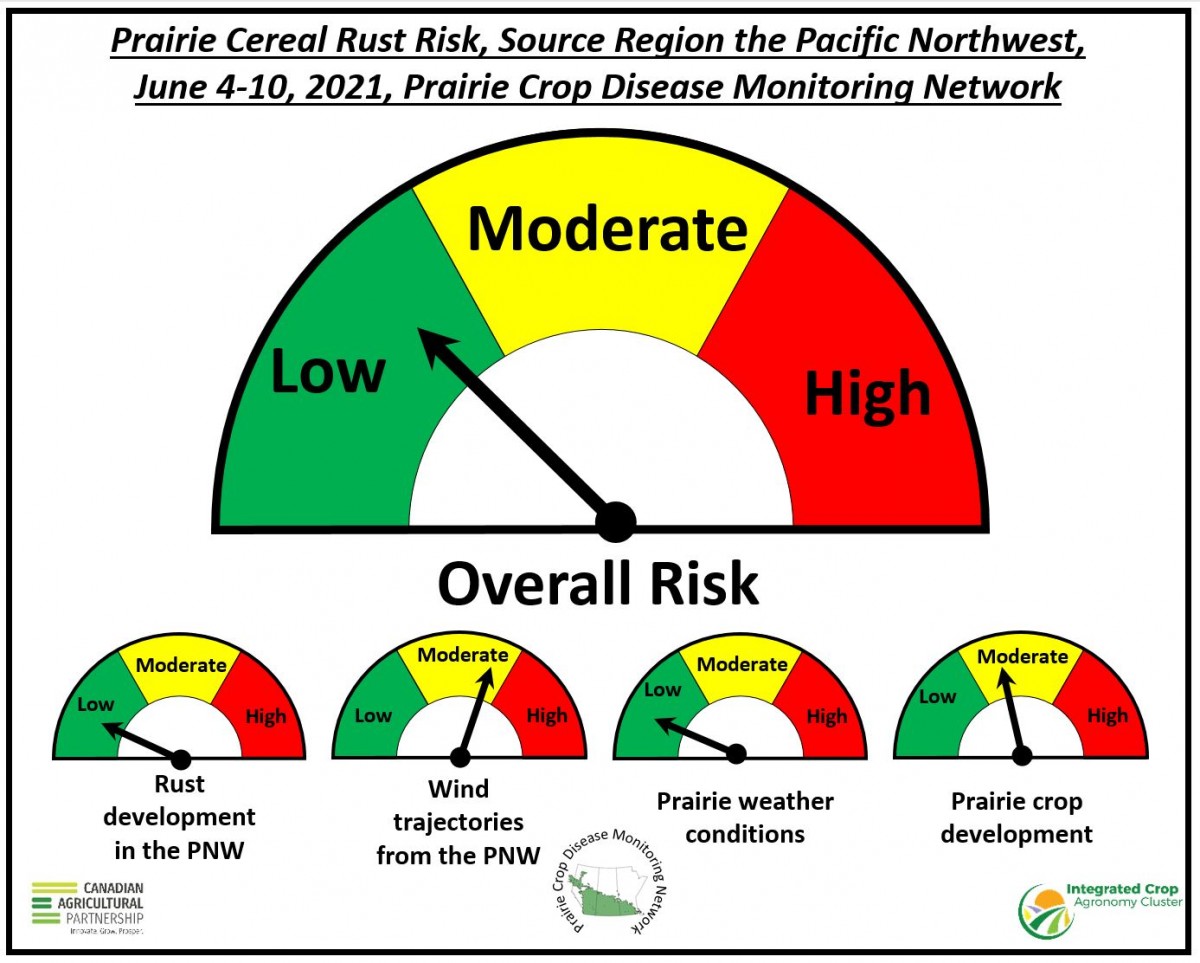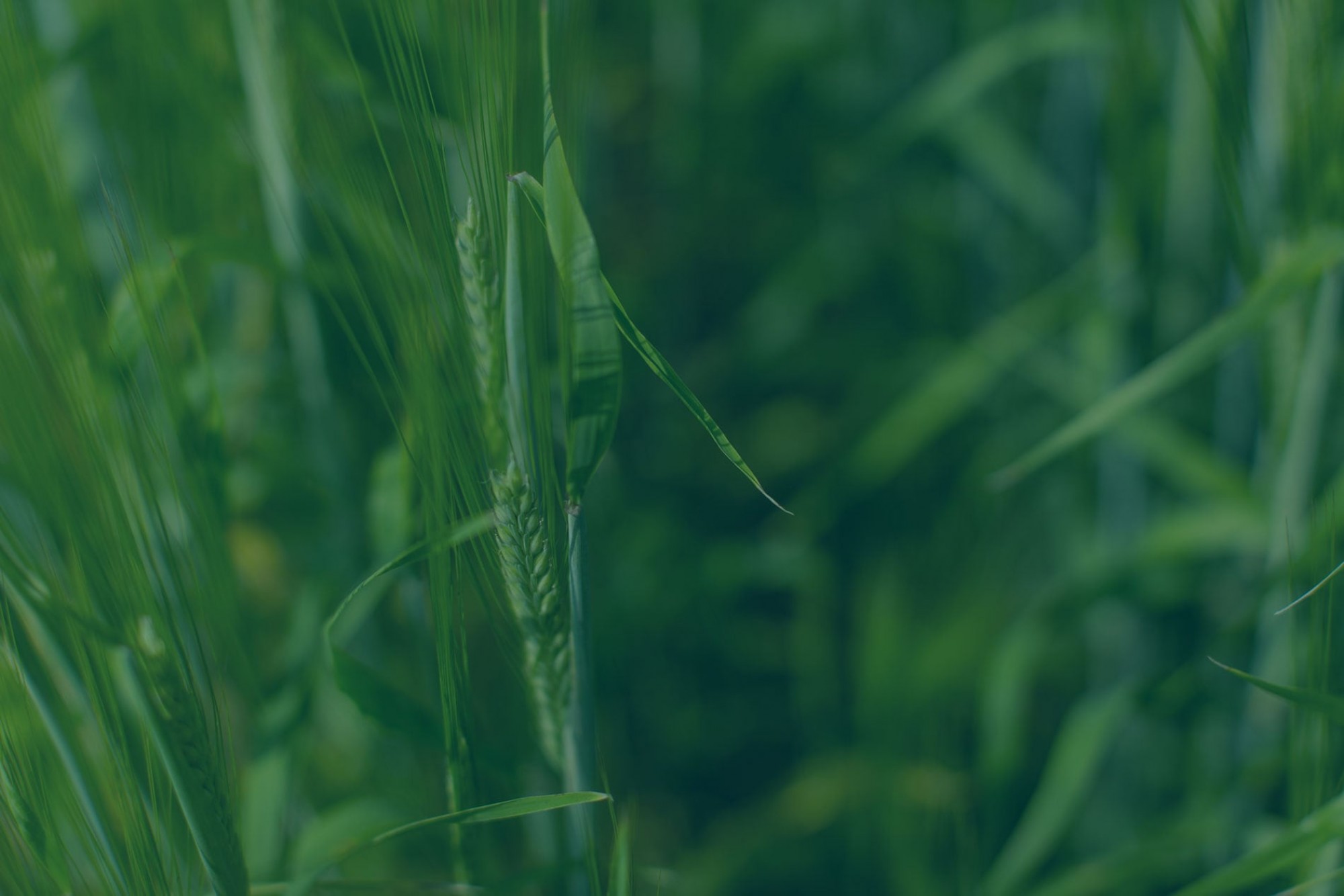Stripe rust wind pathways and the Prairie Crop Disease Monitoring Network
By Jeremy Boychyn (M.Sc)(P.Ag), Agronomy Research Extension Specialist
Stripe rust can be a concern for Alberta producers. Due to the unique life cycle of the stripe rust pathogen, management for this disease is different than other foliar diseases. Unlike diseases such as Fusarium head blight (FHB) and leaf spot diseases, stripe rust does not typically overwinter in Alberta. This means that disease management tactics such as rotation are a less impactful tool to mitigate impacts. However, it should be noted that stripe rust can potentially overwinter in the Western Prairie region on winter wheat crops (Aboukhaddour and Amundsen 2018; Conner et al. 1988; Kumar et al. 2013; Xi et al. 2006, 2015). More often, stripe rust will survive and overwinter in the southern U.S., northern Mexico, the Pacific Northwest, and California (Chen 2005; Menzies and Gilbert 2003; Wiese 1987; Xi et al. 2015). The overwintering stripe rust pathogen will produce spores that can be blown northward by wind currents and successively impact more northerly spring cereal crops (Agrios 1988; Chen 2005; Menzies and Gilbert 2003). Eventually, wind currents may blow stripe rust spores into the Canadian Prairie region.



Above: Prairie cereal risk dashboards developed by the PCDMN based on different inoculum source regions. Sourced from: https://prairiecropdisease.blogspot.com/
This article was developed as a condensed version of the ‘2020 Wind Trajectory and Cereal Rust Overview’ found on the PCDMN website. The full overview can be found here.
For more information on the PCDMN and to subscribe to their newsletter, click here. You can also follow the PCDMN on twitter here.
References:
Aboukhaddour, R. and Amundsen, E. 2018. Stripe rust in southern Alberta in 2017. Canadian Plant Disease Survey 98: 144-145.
Agrios, G.N. 1988. Plant Pathology, 3rd edition. Academic Press, Inc: San Diego. 803 pp.
Chen. X.M. 2005. Epidemiology and control of stripe rust [Puccinia striiformis f. sp. tritici] on wheat. Can. J. Plant Pathol. 27: 314-337.
Conner, R.L., Thomas, J.B., and Kuzyk, A.D. 1988. Overwintering of stripe rust in southern Alberta. Can. Plant Dis. Surv. 68:153-155.
Eversmeyer, M.G., Kramer C.L., and Browder, L.E. 1984. Presence, viability, and movement of Puccinia recondita and P. graminis inoculum in the Great Plains. Plant Dis. 68:392–95.
Kumar, K., Holtz, M.D., Xi, K., and Turkington, T.K. 2013. Overwintering potential of the stripe rust pathogen (Puccinia striiformis) in central Alberta, Canadian Journal of Plant Pathology, 35:3, 304-314, DOI: 10.1080/07060661.2013.809385.
Menzies, J., and Gilbert, J., 2003. Diseases of wheat. In: Bailey, K.L., Gossen, B.D., Gugel,
R.K., Morrall, R.A.A. (Eds.), Diseases of field crops in Canada, 3rd Ed. Canadian Phytopathological Society. Saskatoon, SK. 94–128.
Stakman E.C. 1923. The wheat rust problem in the United States. Proc. Pan-Pacific Sci. Congr. (Aust.) 1:88–96.
Stakman, E.C. 1934. Epidemiology of cereal rusts. In Proc. Pac. Sci. Congr. 5th, 1–14 June 1933, Victoria and Vancouver, B.C. University of Toronto Press, Toronto, Ont. Vol. 4. pp. 3177–3184.
Stakman E.C., and Christensen C.M. 1946. Aerobiology in relation to plant disease. Bot. Rev. 12(4):205–53.
Wiese, M.V. 1987. Compendium of wheat diseases. 2nd Ed. APS Press, St. Paul, Minn. 112 pp.
Xi, K., Turkington, T.K., Salmon, D., McCallum, B.D., and Navabi, A. 2006. Stripe rust 101: What is it, why do we have it, what can be done about it. Pages 190-194 in Proceedings of the 2006 Agronomy Update, January 10 and 11, 2006, Red Deer, AB.
Xi, K., Kumar, K., Holtz, M.D., Turkington, T.K., and Chapman, B.P. 2015. Understanding the development and management of stripe rust in central Alberta. Can. J. Plant Pathol. 37: 21- 39. doi:10.1080/07060661.2014.981215.

